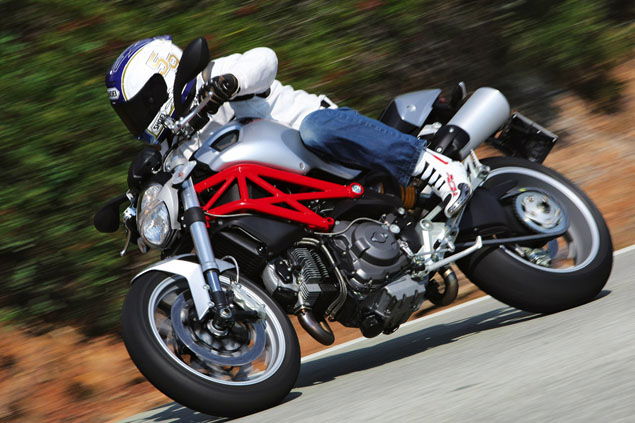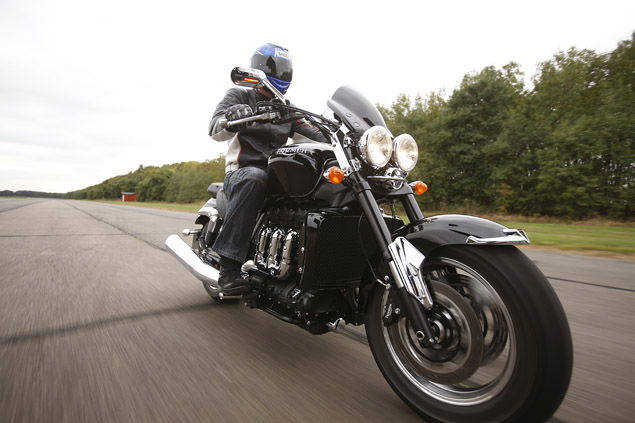Ducati Monster 696 (2008) review
Does the new Ducati Monster 696 (2008) have what it takes to be embraced by the eagerly waiting ‘Monsteristi’?

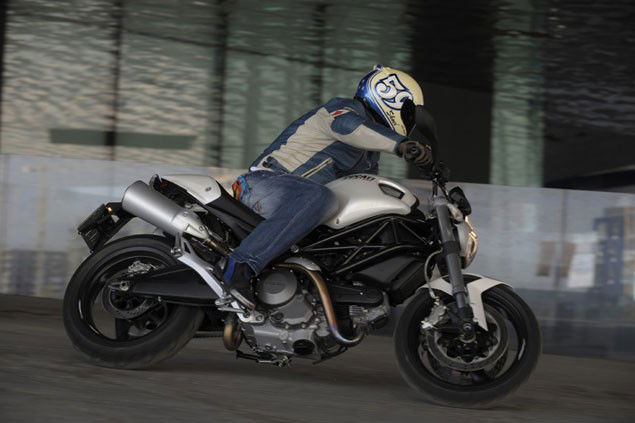
Ducati Monster 696 (2008): Design
While doodling a sketch for a potential drag race bike back in 1992, Ducati designer Miguel Angel Galuzzi unknowingly created the basic principle of a new streetbike. A year later Ducati released the Monster, so called because of an apparent dispute over its name. Some of the Ducati grown ups thought it should have a numbered name like other bikes in the range, others thought that it was so brutal in design it was monstrous, the bike found its name and followed with its own unique place in the market.
15 years and 200,000 bikes later, following the launch of two sportsbikes in the 848 and 1098 Ducati release the all-new 696 Monster. They have set their own expectations very high, maybe too high. The 696 should look a lot like the old 695 to you, because it’s supposed to, part of the design brief was that from 100 metres you should struggle to tell the difference. The dynamic sounds promising, and looks great in real life.
A walk round the bike showed that little details are in fact now little details rather than Friday afternoon afterthoughts like they used to be. On the old model behind the headlight looked like a bowl of multi coloured spaghetti, not so on this one. Ducati have incorporated a dash layout not unlike the 848, it includes a lap timer and even has the DDA (Ducati Data Analyser) capability so you can plug in and dissect exactly how fast you went on your way to work. They have also fitted the bike with similair mirrors to the sportsbikes, although these ones give you a view of the road rather than your elbows.
The basic premise of the original Monster was a sports bike without a fairing, and that hasn’t changed with this incarnation, though the riding position has been altered quite dramatically. The bars are closer to the rider and slightly higher than the old bike, and they also feel a lot wider. There is a touch more steering lock, vented indents in the airbox section of the tank allow the bars to come round as much as possible.
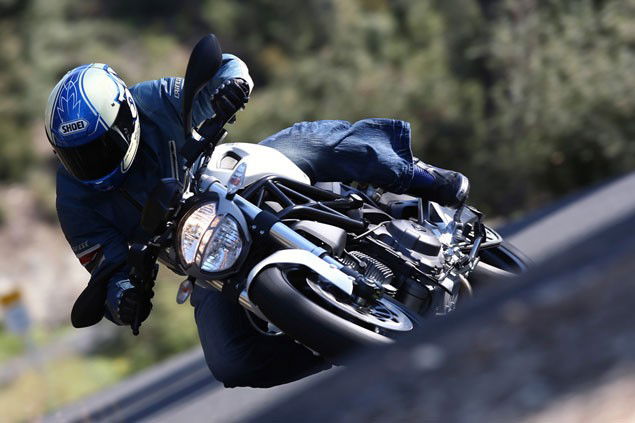
Ducati Monster 696 (2008): Comfort
The seat has been narrowed and lowered to help novice riders and women get to grips with the ground in the best way possible. I didn’t get on with it at all, the reach to the bars put a lot of weight on my wrists, more so than the more extreme-positioned older model and the seat is angled in such a way that I was constantly sliding towards the fuel tank. Something that if I were a customer I would have to seriously consider before buying. The pegs have been set lower as well in an effort to increase comfort over long distances.
That new position is good, when cracking out some miles on a Spanish motorway the bottom half of my body is very comfortable. When you want to start moving around on the bike the pegs feel good on the balls of your feet, and there’s still loads of ground clearance. Radially mounted fully floating 4 pot Brembo brakes slow Marchesini rims sitting on Bridgestone Battlax BT56’s and are held in place by Showa USD forks. As a package (apart from having all the right names) the front end is very good, it was confidence-inspiring enough to let me brake keep deep into corners while leant over, and felt nothing but settled when getting back on the throttle. Of all the obvious comparisons that will be drawn against the Triumph Street Triple, this is one area where the Ducati will definitely shine.
Ducati Monster 696 (2008): Engine
One where it will struggle is power. The 696 is actually a 695, but the engine has been heavily tweaked, the heads have been re-worked and bigger valves have gone in, the top end of the engine has more in common with the 1,100ccc 2-valve engine found in the Multistrada and the Hypermotard. Power is up 7bhp to a claimed 80, and there isn’t a lot below 4,000rpm, but what is there is smooth and flutter free. Things liven up at 6,000rpm when you are treated to a proper airbox howl, mechanical, musical and undeniably very Ducati. It’s all over at just over 9,000rpm but there’s useable power all the way to the limiter. The bike I was riding did hunt a little when held on a constant throttle around 4,000rpm, but I tried a few of the other test bikes and they were fine, apparently my bike had a lean spot.
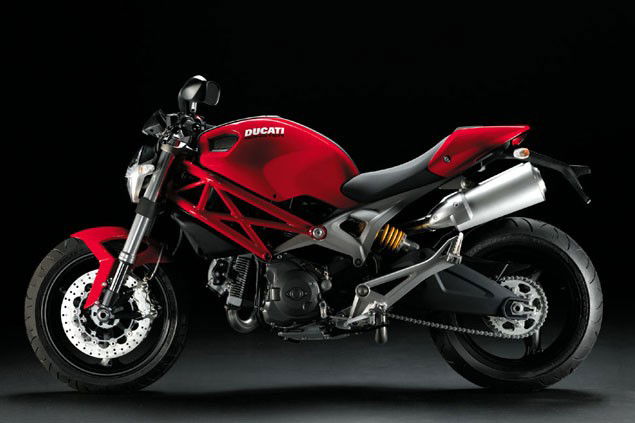
The clutch is one-finger light, it was fun to give it a little ping coming out of slower second gear corners, there isn’t enough power to have to worry about big wheelies but it just helped it into the stronger section of the rev range. If you treat the 696 like an underpowered sportsbike it’s great to ride, really easy to crank over thanks to the leverage supplied through the huge bars. It and holds a line well enough to encourage newer riders or encourage the faster and more committed. Because of the lack of oomph you do end up overcompensating by braking later and getting on the gas earlier, though it’s rewarding I would have preferred a bit more power. If you treat it like a funky town bike it doesn’t disappoint either, it looks good, is easy in traffic and punchy enough not to get swallowed up at the lights.
Should I buy the Ducati Monster 696 (2008)?
I deliberately spent the day before this launch riding a Triupmh Street Triple, the benchmark bike I set for the Monster. Did I feel that the Monster was better than the Triumph? Not really. It’s better in some areas but I’m not convinced it would be good enough to stop me buying British. You can’t argue that £5,500 is a bargain price for the chance to own a Ducati, it just lacked a little of the character that makes Ducatis special. It has moved on in huge leaps from the old model, but so has the competition. A group test will prove that.
The new bike will definitely satisfy the Monsteristi, and I can see parking bays in London being filled with them by the end of the summer. While the fashion-conscious are forming a queue I would probably sit on my money and see which engine goes in next.
Ducati Monster 696(2008): Specifications
- Price: £5,500
- Engine: 696cc, air-cooled, 4-valve V-twin
- Power: 80bhp @ 9000rpm
- Torque: 50.6lb.ft @ 7.750rpm
- Front suspension: 43mm showa USD
- Rear suspension: sachs monoshock, fully adjustable
- Front brake: 320mm discs, four-piston Brembo calipers
- Rear brake: 245mm disc, two-piston caliper
- Dry weight: 161kg (claimed)
- Seat height: 770mm
- Fuel capacity: 15l
- Top speed: 130mph (est)
- Colours: Red, white
